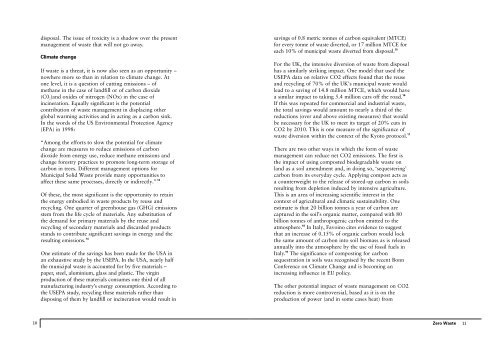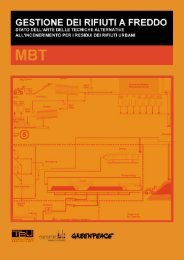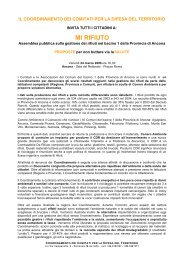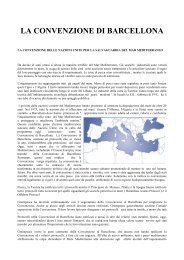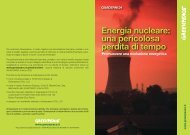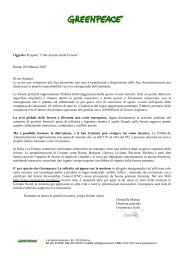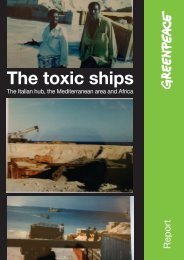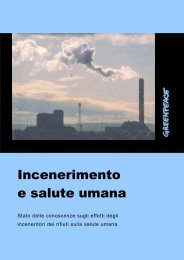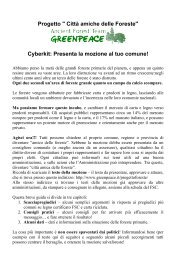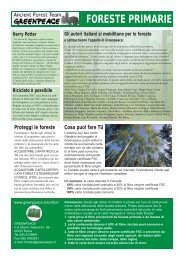Zero Waste by Robin Murray, Greenpeace Environmental Trust 2002
Zero Waste by Robin Murray, Greenpeace Environmental Trust 2002
Zero Waste by Robin Murray, Greenpeace Environmental Trust 2002
You also want an ePaper? Increase the reach of your titles
YUMPU automatically turns print PDFs into web optimized ePapers that Google loves.
disposal. The issue of toxicity is a shadow over the present<br />
management of waste that will not go away.<br />
Climate change<br />
If waste is a threat, it is now also seen as an opportunity –<br />
nowhere more so than in relation to climate change. At<br />
one level, it is a question of cutting emissions – of<br />
methane in the case of landfill or of carbon dioxide<br />
(C0 2 )and oxides of nitrogen (NOx) in the case of<br />
incineration. Equally significant is the potential<br />
contribution of waste management in displacing other<br />
global warming activities and in acting as a carbon sink.<br />
In the words of the US <strong>Environmental</strong> Protection Agency<br />
(EPA) in 1998:<br />
“Among the efforts to slow the potential for climate<br />
change are measures to reduce emissions of carbon<br />
dioxide from energy use, reduce methane emissions and<br />
change forestry practices to promote long-term storage of<br />
carbon in trees. Different management options for<br />
Municipal Solid <strong>Waste</strong> provide many opportunities to<br />
affect these same processes, directly or indirectly.” 13<br />
Of these, the most significant is the opportunity to retain<br />
the energy embodied in waste products <strong>by</strong> reuse and<br />
recycling. One quarter of greenhouse gas (GHG) emissions<br />
stem from the life cycle of materials. Any substitution of<br />
the demand for primary materials <strong>by</strong> the reuse and<br />
recycling of secondary materials and discarded products<br />
stands to contribute significant savings in energy and the<br />
resulting emissions. 14<br />
One estimate of the savings has been made for the USA in<br />
an exhaustive study <strong>by</strong> the USEPA. In the USA, nearly half<br />
the municipal waste is accounted for <strong>by</strong> five materials –<br />
p a p e r, steel, aluminium, glass and plastic. The virg i n<br />
p roduction of these materials consumes one third of all<br />
manufacturing industry ’s energy consumption. According to<br />
the USEPA study, recycling these materials rather than<br />
disposing of them <strong>by</strong> landfill or incineration would result in<br />
savings of 0.8 metric tonnes of carbon equivalent (MTCE)<br />
for every tonne of waste diverted, or 17 million MTCE for<br />
each 10% of municipal waste diverted from disposal. 1 5<br />
For the UK, the intensive diversion of waste from disposal<br />
has a similarly striking impact. One model that used the<br />
USEPA data on relative CO2 effects found that the reuse<br />
and recycling of 70% of the UK’s municipal waste would<br />
lead to a saving of 14.8 million MTCE, which would have<br />
a similar impact to taking 5.4 million cars off the road. 16<br />
If this was repeated for commercial and industrial waste,<br />
the total savings would amount to nearly a third of the<br />
reductions (over and above existing measures) that would<br />
be necessary for the UK to meet its target of 20% cuts in<br />
CO2 <strong>by</strong> 2010. This is one measure of the significance of<br />
waste diversion within the context of the Kyoto protocol. 17<br />
There are two other ways in which the form of waste<br />
management can reduce net CO2 emissions. The first is<br />
the impact of using composted biodegradable waste on<br />
land as a soil amendment and, in doing so, ‘sequestering’<br />
carbon from its everyday cycle. Applying compost acts as<br />
a counterweight to the release of stored-up carbon in soils<br />
resulting from depletion induced <strong>by</strong> intensive agriculture.<br />
This is an area of increasing scientific interest in the<br />
context of agricultural and climatic sustainability. One<br />
estimate is that 20 billion tonnes a year of carbon are<br />
captured in the soil’s organic matter, compared with 80<br />
billion tonnes of anthropogenic carbon emitted to the<br />
atmosphere. 18 In Italy, Favoino cites evidence to suggest<br />
that an increase of 0.15% of organic carbon would lock<br />
the same amount of carbon into soil biomass as is released<br />
annually into the atmosphere <strong>by</strong> the use of fossil fuels in<br />
Italy. 19 The significance of composting for carbon<br />
sequestration in soils was recognised <strong>by</strong> the recent Bonn<br />
Conference on Climate Change and is becoming an<br />
increasing influence in EU policy.<br />
The other potential impact of waste management on CO2<br />
reduction is more controversial, based as it is on the<br />
production of power (and in some cases heat) from<br />
10<br />
<strong>Zero</strong> <strong>Waste</strong><br />
11


